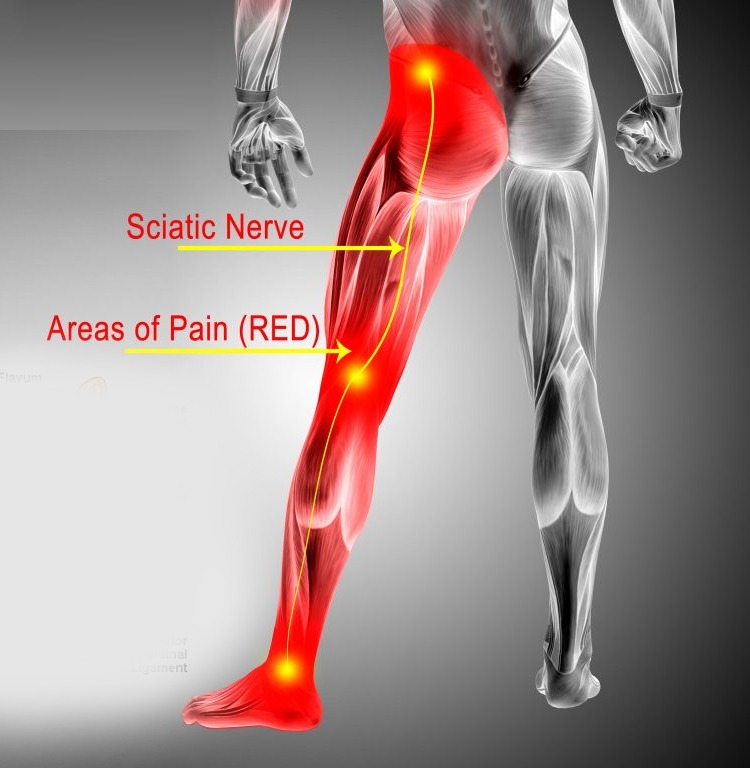Sciatica
Sciatica happens when irritation, inflammation, pinching or compression affect the sciatic nerve that run down your lower back and into your legs. It’s usually not a serious or dangerous condition, and most people with sciatica get better with remedial treatment and time, however severe cases may require surgery.
What is Sciatica?
Sciatica is a nerve pain from an injury or irritation to your sciatic nerve. In addition to pain, it can involve tingling or numbness in your back or glutes that may also radiate down your leg. More severe symptoms are also possible.
Your sciatic nerve is the longest and thickest nerve in your body. It’s up to 2 centimetre wide. Despite its name it’s not just one nerve. It’s actually a bundle of nerves that come from five nerve roots branching off from your spinal cord.
Having sciatica means you can experience mild to severe pain anywhere with nerves that connect to the sciatic nerve. The symptoms can affect your lower back, hips, buttocks or legs. Some symptoms may extend as far down as your feet and toes, depending on the specific nerve/s affected.
Having sciatica means you can experience mild to severe pain anywhere with nerves that connect to the sciatic nerve. The symptoms can affect your lower back, hips, buttocks or legs. Some symptoms may extend as far down as your feet and toes, depending on the specific nerve(s) affected.
Types of Sciatica
There are two types of sciatica. Regardless of what type you have; the effects are the same. The types are:
- True sciatica: This is any condition or injury that directly affects the sciatic nerve
- Sciatica-like conditions: These are conditions that feel like sciatica but happen for other reasons related to sciatic nerve or the nerves that bundle together to form it.
Symptoms of sciatica
- Hot pain in the buttock
- Aching in the buttock, back of the thigh (hamstring) and calf
- Pain in the ankle and foot
- Pins and needles
- Increased pain when lifting, straining or coughing
- Loss of power to the muscles of the leg and foot.
Causes of sciatica
- Slipped or herniated disk
- Spinal stenosis
- Piriformis syndrome (a pain disorder involving the narrow muscle in the buttocks)
- Pelvic injury or fracture
- Spondylolisthesis
- Tumors
Treatment for sciatica
Some pain medications can provide relief from the pain of sciatica, but unfortunately the relief is often temporary. Remedial Massage, however, can not only relieve the pain of sciatica but also address the cause of the pain.  At the same time, it can improve the general function in the lower back, glutes and legs, improving range of motion. Furthermore, massage for sciatica pain will also greatly improve circulation in the back, glutes and legs, which is important for the health of muscle tissue.






